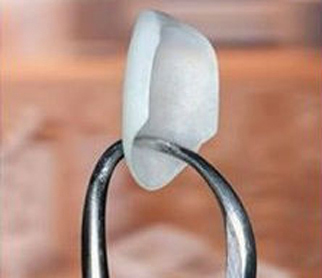I have eight upper porcelain veneers. My last two dental cleanings were with a magnetostrictive ultrasonic cleaner. Each time a porcelain veneer fractured within days of the cleaning. I wonder why my hygienist would use this ultrasonic cleaner if it’s known to fracture veneers.
An ultrasonic scaler can be piezoelectric or magnetostrictive. We will explain the difference.
Magnetostrictive vs. Piezoelectric Ultrasonic Scalers

Porcelain veneer
A Journal of Clinical Periodontology published the results of a study comparing piezoelectric and magnetostrictive scalers. Researchers found that the magnetostrictive scaler was slower but left the root surface smoother.
Dentsply manufactured the first magnetostrictive ultrasonic scaler Cavitron, which has been around for decades. Although it can be gentler than the piezoelectric scaler, it is more technique-sensitive and requires skill to minimize the risk of damaging natural teeth, chipping the margin of porcelain veneers, or damaging other dental work.
However, a porcelain veneer may crack or fracture if a uses an ultrasonic caller tip on the porcelain surface. Also, an improperly used ultrasonic scaler can cause nicks or rough areas in teeth roots, causing plaque and calculus accumulation over the years which can dad to tooth decay and gum disease if left untreated. Read an article on a website for dental hygienists that compares magnetostrictive and piezoelectric scalers.
We recommend finding a skilled cosmetic dentist with hygienists trained and skilled in using ultrasonic scalers on patients with porcelain veneers. You can prevent experiencing damage to your veneers or teeth.
Sugarland, Texas, dentist Dr. Siny Thomas sponsors this post.


